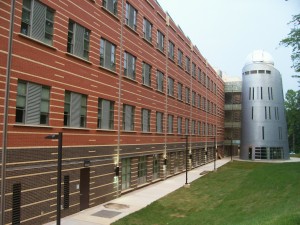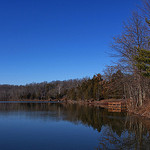Key information for official sites with agreements:
- Camp High Road is open unless specified on Camp High Road specific page
- C.M. Crockett is open only during periods specified on the Crockett specific page
- Meadowkirk observing requires explicit permission. See Meadowkirk page for details
- Sky Meadows State Park is open for vetted volunteers only unless posted on the Sky Meadows specific page
- Spruce Knob Mountain Center: See site specific page or contact site coordinator for availability
The nearly new moon will ensure dark skies for what should be an excellent show. Best viewing will be from a dark location after midnight.
The Geminids is the king of the meteor showers. It is considered by many to be the best shower in the heavens, producing up to 120 multicolored meteors per hour at its peak. It is produced by debris left behind by an asteroid known as 3200 Phaethon, which was discovered in 1982. The shower runs annually from December 7-17. It peaks this year on the night of the 13th and morning of the 14th. The morning of the 15th could also be nearly as active this year. Meteors will radiate from the constellation Gemini, but can appear anywhere in the sky.
http://www.seasky.org/astronomy/astronomy-calendar-2017.html

Public nights at Great Meadow are on hold due to the pandemic. We look forward to holding these events again when everyone’s safety can be assured!
See front page of NOVAC Site for changes to event.
More information about Great Meadow including directions and parking visit the Great Meadow Site page.

Our meetings on the second Sunday of the month, online.
Our meetings web page, has additional details.
We look forward to seeing you on Sunday evenings!
This total eclipse has its maximum totality solidly hitting land in Chile and Argentina. Regions viewing at least a partial are: southern Africa, much of South America, Pacific, Atlantic, Indian Ocean, Antarctica. See the URL below for a map and specific times.
https://www.timeanddate.com/eclipse/map/2020-december-14
This last happened in 2000, so it’s worth staying up for on this shortest day of the year. And, while you’re awake, look out for meteors! The Ursids shower will be in full effect.
This rare conjunction of these two planets is known as a “great conjunction”. (Didn’t we hear about those in the film “The Dark Crystal”?)
The two bright planets will appear only 7 arc minutes of each other in the night sky. They will be so close that they will appear to make a bright double planet. Look to the west just after sunset for this impressive and rare planetary pair.
The first quarter moon should set just after midnight leaving dark skies for what could be a good show. Best viewing will be just after midnight from a dark location far away from city lights.
Also, check out the conjunction of Jupiter and Saturn, which will appear as if they are a single body!
The Ursids is a minor meteor shower producing about 5-10 meteors per hour. It is produced by dust grains left behind by comet Tuttle, which was first discovered in 1790. The shower runs annually from December 17-25. It peaks this year on the the night of the 21st and morning of the 22nd. Meteors will radiate from the constellation Ursa Minor, but can appear anywhere in the sky.

